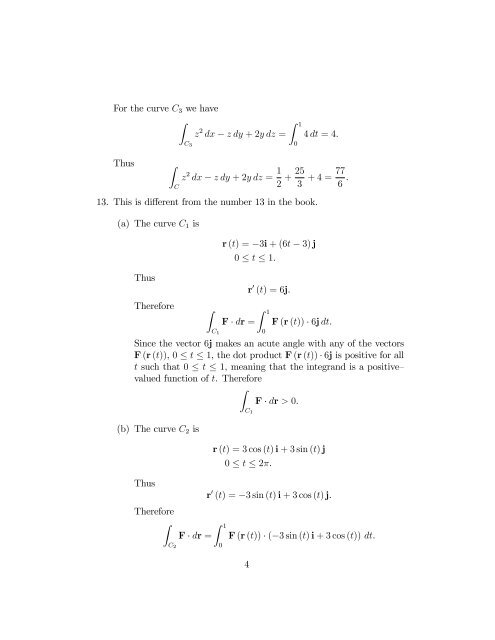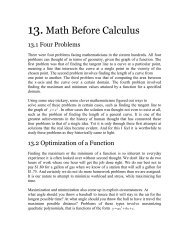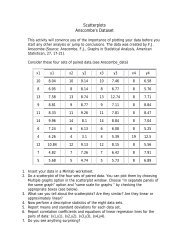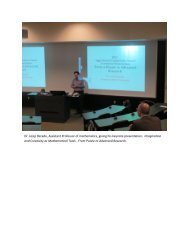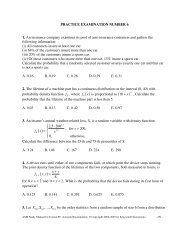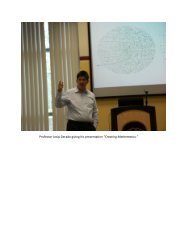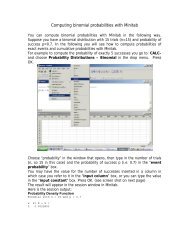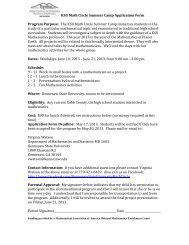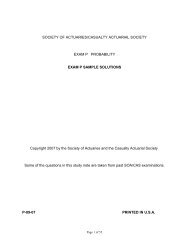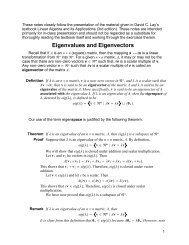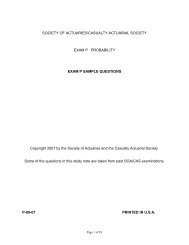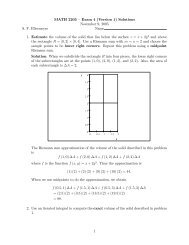Answers and Solutions to Section 13.2 Homework Problems 1"27 ...
Answers and Solutions to Section 13.2 Homework Problems 1"27 ...
Answers and Solutions to Section 13.2 Homework Problems 1"27 ...
You also want an ePaper? Increase the reach of your titles
YUMPU automatically turns print PDFs into web optimized ePapers that Google loves.
For the curve C3 we have<br />
Z<br />
z 2 dx z dy + 2y dz =<br />
Thus Z<br />
C<br />
C3<br />
Z 1<br />
0<br />
4 dt = 4.<br />
z 2 dx z dy + 2y dz = 1 25 77<br />
+ + 4 =<br />
2 3 6 .<br />
13. This is di¤erent from the number 13 in the book.<br />
(a) The curve C1 is<br />
Thus<br />
Therefore Z<br />
C1<br />
r (t) = 3i + (6t 3) j<br />
0 t 1.<br />
F dr =<br />
r 0 (t) = 6j.<br />
Z 1<br />
0<br />
F (r (t)) 6j dt.<br />
Since the vec<strong>to</strong>r 6j makes an acute angle with any of the vec<strong>to</strong>rs<br />
F (r (t)), 0 t 1, the dot product F (r (t)) 6j is positive for all<br />
t such that 0 t 1, meaning that the integr<strong>and</strong> is a positive–<br />
valued function of t. Therefore<br />
Z<br />
F dr > 0.<br />
(b) The curve C2 is<br />
Thus<br />
Therefore<br />
Z<br />
C2<br />
F dr =<br />
C1<br />
r (t) = 3 cos (t) i + 3 sin (t) j<br />
0 t 2 .<br />
r 0 (t) = 3 sin (t) i + 3 cos (t) j.<br />
Z 1<br />
0<br />
F (r (t)) ( 3 sin (t) i + 3 cos (t)) dt.<br />
4


